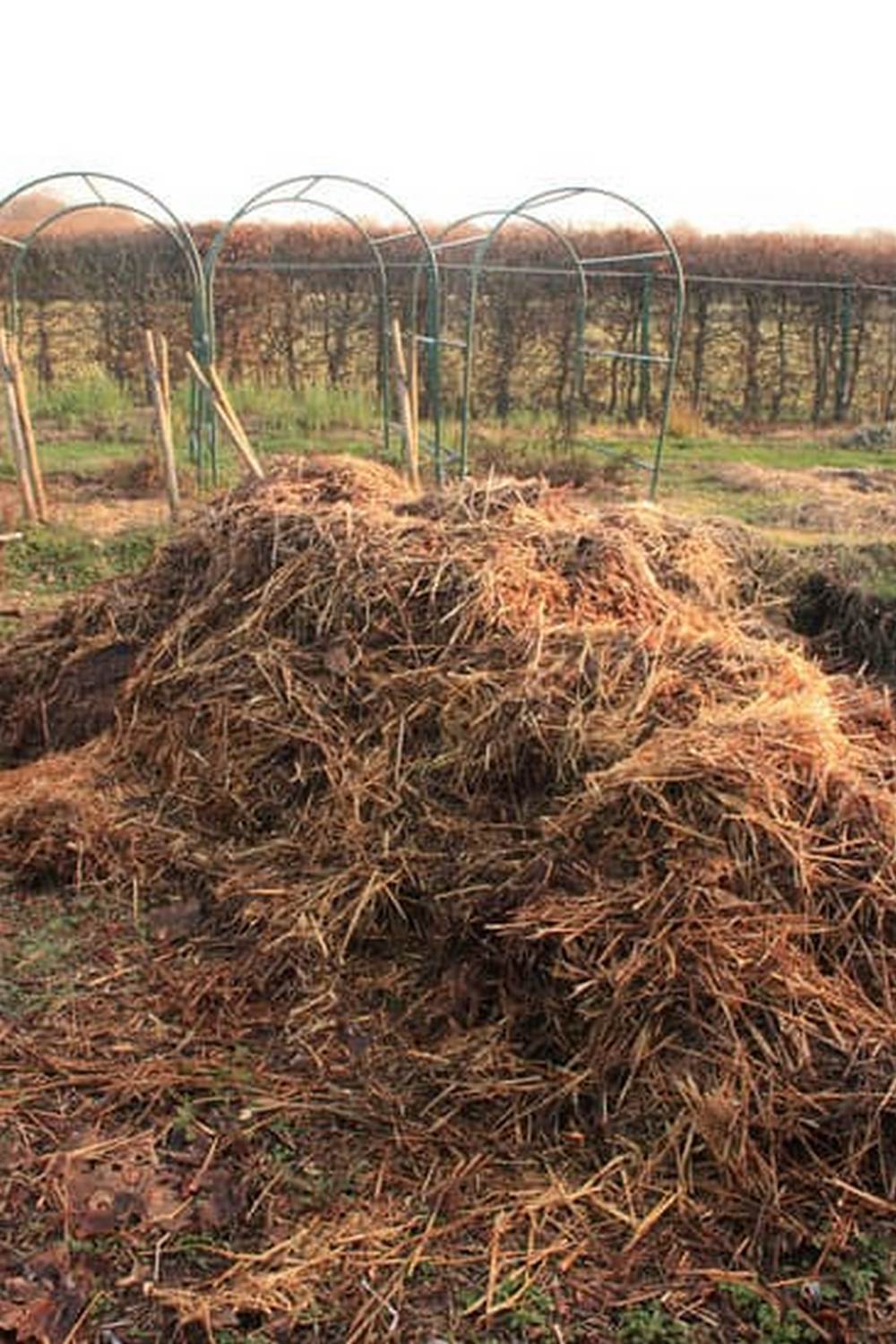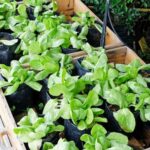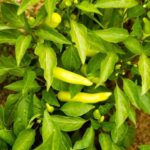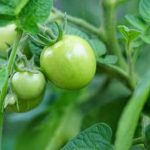When it comes to vegetable gardening, Alabama offers a unique and rewarding experience. With its diverse climate and rich soil, the state provides an ideal environment for growing a wide variety of delicious and nutritious vegetables. To make the most of your gardening efforts, it is essential to have a well-planned and organized calendar that outlines the tasks and activities specific to Alabama’s growing seasons.
A gardening calendar serves as a roadmap for successful gardening throughout the year. It helps you stay on track with planting, harvesting, and maintenance tasks, ensuring that you maximize your yield and minimize any potential setbacks. Whether you are a seasoned gardener or just starting out, having a well-prepared Alabama vegetable gardening calendar is crucial for achieving fruitful results.
Creating an effective gardening calendar requires considering several factors unique to Alabama’s climate. From frost dates to average temperatures and rainfall patterns, these considerations play a crucial role in determining when to plant different vegetables and what maintenance tasks should be prioritized. By carefully analyzing these factors, you can tailor your gardening schedule to align with the optimal times for growth in Alabama’s specific regions.
In the following sections, we will delve into more detail about creating an Alabama vegetable gardening calendar. We will explore the specific vegetables that thrive in this state’s climate and provide month-by-month breakdowns of tasks and activities to guide you throughout the year.
Additionally, we will share expert recommendations, tips, tricks, and resources that will help ensure your success as an Alabama vegetable gardener. Stay tuned for valuable insights that will transform your green thumb into one capable of flourishing in this uniquely vibrant setting.
The importance of having a gardening calendar
A gardening calendar is an essential tool for any gardener, and it holds particular importance in Alabama due to the state’s unique climate. Having a well-planned gardening calendar helps maximize the potential of your vegetable garden and ensures that you are utilizing appropriate tasks and activities at the right time.
Optimizing planting and harvesting times
One of the primary reasons why a gardening calendar is crucial is because it helps you optimize planting and harvesting times for different vegetables. In Alabama, the climate can vary greatly from season to season, resulting in significant variations in temperature, rainfall, and sunlight. By following a well-designed gardening calendar, you can strategically plan when to start seeds indoors or outdoors, when to transplant seedlings, and when to harvest your crops.
Having these specific timeframes in mind allows you to take full advantage of Alabama’s growing seasons and ensure that your plants have the best chance of success. It also enables you to stagger your plantings throughout the year so that you have a continuous supply of fresh produce instead of bulk harvests all at once.
Managing soil health and pest control
Another crucial aspect addressed by a gardening calendar is managing soil health and pest control. Different vegetables have varying nutrient requirements, preferred soil pH levels, and susceptibility to pests. A gardening calendar will help guide you on when to add compost or fertilizer to your soil based on each crop’s needs.
Additionally, an organized schedule for pest control measures such as monitoring, prevention, and treatments can be included in your gardening calendar. This aspect becomes especially vital because certain pests thrive during specific periods in Alabama’s climate. By staying proactive with pest control based on your gardening calendar recommendations, you may prevent major outbreaks or damage before they occur.
Maintaining organization and efficiency
Lastly, having a gardening calendar helps maintain organization and efficiency within your vegetable garden. By clearly outlining tasks and activities month by month, you can avoid feeling overwhelmed or forgetting crucial steps.
A gardening calendar allows you to plan ahead and allocate your time and resources efficiently. It helps ensure that you have all the necessary tools, seeds, supplies, or equipment ready for each task. By following a gardening calendar, you are more likely to stay on track with your garden’s progress and make the most of your available time and energy.
Factors to consider when creating an Alabama vegetable gardening calendar
Creating a gardening calendar that is tailored to the specific climate and conditions of Alabama is essential for successful vegetable gardening. There are several important factors to consider when creating an Alabama vegetable gardening calendar.
- Average frost dates: Frost dates play a crucial role in determining the timing of planting and harvesting in Alabama. It is important to know the last average frost date in spring as well as the first average frost date in fall, as this will help determine when to start seeds indoors, transplant seedlings outdoors, and harvest your crops.
The climate of Alabama varies from region to region, so it is recommended to consult with your local agricultural extension office or use online resources for accurate frost date information. - Soil temperature: Soil temperature affects seed germination and plant growth. Different vegetables have different temperature requirements for optimal growth. For example, warm-season crops like tomatoes and peppers thrive in soil temperatures above 60 degrees Fahrenheit, while cool-season crops like lettuce and carrots prefer cooler soil temperatures around 50 degrees Fahrenheit. Understanding the ideal soil temperature range for each vegetable will help you determine the best time to sow seeds or transplant seedlings.
- Day length: Day length can also impact the growth and development of certain vegetables. Some plants are sensitive to day length changes, such as onions which need long days for bulb formation, while others may go to seed prematurely if exposed to too many hours of daylight. When planning your gardening calendar, consider the daily sunlight hours during different months and choose appropriate varieties that match your available daylight conditions.
Consideration of these factors will allow you to create a precise gardening calendar that maximizes productivity and minimizes potential setbacks due to unfavorable weather conditions or other factors specific to Alabama’s climate. By paying attention to average frost dates, soil temperatures, and day length, you can ensure that your vegetables have the best chance of thriving in your garden.
| Factors to consider | Description |
|---|---|
| Average frost dates | Determines the timing of planting and harvesting |
| Soil temperature | Influences seed germination and plant growth |
| Day length | Affects growth and development of certain vegetables |
The specific vegetables that thrive in Alabama’s climate
Alabama’s climate is well-suited for growing a wide variety of vegetables throughout the year. However, it is important to choose the right vegetables that can thrive in Alabama’s unique weather conditions and soil type. Here are some specific vegetables that are known to flourish in Alabama:
- Tomatoes: Tomatoes are a popular choice among Alabama gardeners due to their versatility and ability to adapt to different growing conditions. Varieties such as ‘Better Boy’ and ‘Cherokee Purple’ perform well in Alabama’s warm summers.
- Peppers: Whether it’s bell peppers, jalapenos, or banana peppers, these warm-season crops thrive in Alabama’s long, hot summers. Plant them after the risk of frost has passed.
- Okra: A staple in Southern cuisine, okra thrives in Alabama’s hot and humid climate. It is a popular summer vegetable that can be harvested continuously throughout the season.
- Cucumbers: Cucumbers are excellent choices for Alabama gardeners looking for high yields. Varieties such as ‘Straight Eight’ and ‘Marketmore’ perform well in this region.
- Squash: Summer squash varieties like zucchini and yellow crookneck squash are well-suited for growing in Alabama due to their ability to withstand heat and humidity.
- Sweet potatoes: Known for their sweet flavor and nutritional value, sweet potatoes are highly adaptable to Alabama’s climate. They require loose, well-drained soil with plenty of nutrients.
To ensure successful growth of these vegetables, it is essential to provide them with proper care, including good soil preparation, optimal watering practices, and regular pest management measures. Additionally, rotating crops each season can help prevent the buildup of pests and diseases associated with specific vegetables.
By choosing the right vegetables that thrive in Alabama’s climate and providing them with the necessary care, gardeners can enjoy a bountiful harvest throughout the year.
- Tomatoes: ‘Better Boy’, ‘Cherokee Purple’
- Peppers: bell peppers, jalapenos, banana peppers
- Okra
- Cucumbers: ‘Straight Eight’, ‘Marketmore’
- Squash: zucchini, yellow crookneck squash
- Sweet potatoes
Month-by-month breakdown of tasks and activities in the Alabama vegetable gardening calendar
January
In January, Alabama gardeners can start preparing for the upcoming growing season. It is a great time to gather supplies such as seeds, fertilizers, and gardening tools. Indoor seed starting can also begin during this month for warm-season crops like tomatoes, peppers, and eggplants. If the weather permits, cool-season vegetables such as lettuce, kale, and broccoli can be planted outdoors.
February
February is an exciting month as it marks the beginning of spring planting in Alabama. Gardeners can start transplanting their indoor seedlings to larger pots or directly into the garden. Onions and potatoes can be planted around mid-February. It is also important to keep an eye on possible late frosts or freezes and protect tender plants accordingly.
March
As the temperatures rise in March, Alabama gardeners should focus on getting their gardens ready for the growing season. Transplanting cool-season crops like cabbage and leafy greens can continue throughout the month. Warm-season vegetables such as beans, corn, and squash can be planted towards the end of March once soil temperatures have warmed up.
April
April brings warmer weather that promotes rapid growth in vegetable gardens across Alabama. It is a busy time for planting as many warm-season crops including tomatoes, peppers, cucumbers, and melons can be seeded directly into the garden or transplanted from containers. Extra care should be taken in watering newly planted seedlings to ensure adequate moisture.
May
In May, Alabama gardeners should focus on maintaining their vegetable gardens by providing consistent watering and mulching to conserve moisture. Regularly monitor plants for pests and diseases and take appropriate action if necessary. Harvesting of cool-season vegetables like lettuce and spinach may still continue while warm-season crops gradually grow larger.
June
June in Alabama brings the arrival of summer heat, which requires extra attention to watering. Regularly check the soil moisture level and water deeply to ensure plants receive enough hydration. Harvesting of warm-season vegetables like tomatoes, peppers, and beans can begin as they become ripe.
July
In July, Alabama gardeners should be vigilant about controlling weeds that compete with desirable plants for water and nutrients. It may be necessary to provide shade or protection from intense sun for some plants during the hottest part of the day. Continue harvesting vegetables regularly to encourage continuous production throughout the summer.
August
August marks the end of summer and a crucial time for planting fall crops in Alabama. Start seeds indoors for cool-season vegetables such as broccoli, kale, and collard greens that will thrive in milder temperatures. Existing warm-season crops may still provide harvestable produce until frost arrives.
September
As cooler temperatures arrive, September is an ideal month for starting any remaining fall plantings. Transplant seedlings into the garden beds and continue tending to warm-season crops until they reach maturity or a frost is forecasted. Regularly remove spent plants and debris to prevent disease buildup.
October
October brings pleasant weather in Alabama, making it an enjoyable time to work in the garden. Plant cool-season crops like carrots, beets, radishes, and lettuce directly into well-prepared soil. Remove any lingering warm-season crops that have stopped producing.
November
November signals the transition into winter gardening in Alabama. Focus on direct-seeding cold-hardy vegetables such as kale, spinach, mustard greens, and turnips. Monitor soil moisture levels during drier periods and protect tender seedlings from potential frosts.
December
December is a relatively quiet month for outdoor gardening, but there are still tasks to be done. Take advantage of any milder days to clean garden beds, remove weeds, and protect plants from potential freezes. Start planning for the upcoming year by researching new varieties and developing a garden layout for the next growing season.
By following this month-by-month breakdown, Alabama vegetable gardeners can stay organized and ensure that their gardens thrive throughout the year. Remember to always adapt these tasks and activities based on specific climate conditions and individual gardening preferences.
Tips and tricks for successful vegetable gardening in Alabama
One of the keys to successful vegetable gardening in Alabama is selecting the right vegetables for the climate. Alabama’s long, hot summers and mild winters create some unique challenges for gardeners. To ensure a bountiful harvest, it’s important to choose vegetable varieties that are well-suited to Alabama’s climate.
One tip for successful vegetable gardening in Alabama is to choose heat-tolerant crops. Vegetables such as okra, peppers, sweet potatoes, and tomatoes thrive in the hot temperatures found in Alabama during the summer months. These vegetables have adapted to tolerate the heat and are more likely to produce a good crop.
Another trick for successful vegetable gardening in Alabama is to provide adequate water and irrigation. The hot, dry summers can be challenging for plants. It’s important to give your vegetables a consistent supply of water to help them thrive. Consider using drip irrigation or soaker hoses to deliver water directly to the roots while minimizing evaporation loss.
In addition, mulching is an effective technique that can help with successful vegetable gardening in Alabama. Applying a layer of organic mulch around your plants helps retain moisture in the soil, suppress weeds, and regulate soil temperature. This is especially important during the hot summer months when soil tends to dry out quickly.
By following these tips and tricks, you’ll be well on your way to a successful vegetable garden in Alabama. Remember to also monitor your plants regularly for pest and disease issues, provide proper fertilization based on soil tests, and practice good garden hygiene to prevent the spread of diseases. With a little effort and know-how, you can enjoy a productive and fulfilling vegetable garden in Alabama’s unique climate.
Common challenges faced in Alabama vegetable gardening and how to overcome them
Alabama vegetable gardening comes with a unique set of challenges. However, with proper planning and knowledge, it is possible to overcome these obstacles and achieve a successful harvest. Here are some common challenges faced by gardeners in Alabama and effective strategies to overcome them:
- Soil quality: Alabama’s soil can be clayey or sandy, which may not be ideal for certain vegetables. To improve soil quality, consider adding organic matter such as compost or well-rotted manure. This will enrich the soil with essential nutrients, improve drainage, and promote healthy root development.
- Pest control: Insects, diseases, and weeds are common problems that can affect vegetable crops in Alabama. One effective technique is companion planting, where specific plants are grown together to deter pests or attract beneficial insects. For example, planting marigolds around your vegetables can help repel nematodes naturally. Regularly inspecting plants for signs of pests or diseases and taking prompt action can also prevent them from spreading.
- Temperature fluctuations: Alabama experiences both cold winters and hot summers, which can stress vegetable plants. To protect crops from extreme temperatures, consider using row covers or shade cloth during intense heat or providing mulch during winter months to insulate the soil and regulate temperature fluctuations.
- Water management: Adequate watering is crucial for successful vegetable gardening in Alabama’s climate. Inconsistent rainfall patterns combined with high temperatures can cause drought stress or overwatering issues. Establishing a regular watering schedule based on the specific needs of each crop while monitoring soil moisture levels is essential. Installing drip irrigation systems or using soaker hoses can also ensure efficient water usage.
Additionally, protecting young seedlings during frosty nights with cold frames or covering them with cloths can help prevent damage.
By proactively addressing these common challenges faced in Alabama vegetable gardening, you can set yourself up for success and enjoy an abundant harvest. Remember to stay informed, adapt your strategies as needed, and seek advice from experienced gardeners or local agricultural extension services for further guidance. With persistence and knowledge, you can overcome these challenges and create a thriving vegetable garden in Alabama’s unique climate.
Expert recommendations and resources for creating a successful Alabama vegetable gardening calendar
Creating a successful vegetable gardening calendar in Alabama requires knowledge and expertise. Luckily, there are many experts who have shared their recommendations and resources to help gardeners navigate the unique challenges of gardening in this state.
One expert recommendation is to consult the Alabama Cooperative Extension System (ACES). ACES provides valuable resources and information specifically tailored to Alabama gardeners. They offer publications, workshops, and even a helpline where you can ask gardening questions to experienced professionals. By utilizing the wealth of knowledge provided by ACES, gardeners can ensure that their gardening calendar is accurate and effective.
Another great resource for creating a successful vegetable gardening calendar in Alabama is local master gardener programs. These programs consist of trained volunteers who have completed horticulture courses and are dedicated to helping others with their gardening needs. Master gardeners often hold workshops, seminars, and Q&A sessions where they share their expertise on various topics including creating a gardening calendar. Connecting with local master gardener programs can provide valuable insights specific to your region within Alabama.
Additionally, online forums and communities dedicated to gardening in Alabama can be an excellent source of advice and recommendations from fellow gardeners. These platforms allow you to connect with experienced individuals who have successfully grown vegetables in similar climates. By participating in these online communities, you can learn from their experiences, get tips on creating an effective gardening calendar, and even seek recommendations for specific varieties of vegetables that thrive in Alabama’s climate.
Conclusion and final thoughts on the Alabama vegetable gardening calendar.
In conclusion, the Alabama vegetable gardening calendar is an essential tool for any gardener in the state. It provides a month-by-month breakdown of tasks and activities that need to be done to ensure successful vegetable growth. By following this calendar, gardeners can maximize their yields and harvest fresh vegetables throughout the year.
Creating a gardening calendar requires careful consideration of various factors such as climate, soil conditions, and plant preferences. Alabama’s unique climate provides opportunities for growing a wide range of vegetables that thrive in its conditions. By selecting the right varieties and considering temperature fluctuations throughout the year, gardeners can ensure a productive harvest.
While the Alabama vegetable gardening calendar offers valuable guidance, it is important to remember that each garden is unique. Adaptations and modifications may be necessary based on specific microclimates and individual circumstances. Additionally, staying informed about common challenges faced in Alabama vegetable gardening, such as pests or diseases, will help prevent problems and maintain healthy plants.
For additional support in creating a successful Alabama vegetable gardening calendar, there are expert recommendations and resources available. Local agricultural extension services can provide tailored advice based on regional factors. Gardening magazines, websites, and forums are also great sources of inspiration and information.
Frequently Asked Questions
When can I plant vegetables in Alabama?
In Alabama, the best time to plant vegetables depends on the specific region and the type of vegetable you want to grow. The general guideline is to start planting cool-season crops, such as broccoli, kale, and lettuce, around late winter or early spring when the soil has warmed up enough for them to thrive.
Warm-season crops like tomatoes, peppers, and squash are typically planted in late spring or early summer, after the danger of frost has passed. It’s important to consider the average last frost date in your area and consult a local gardening guide or extension service for more precise recommendations.
Can you grow vegetables year round in Alabama?
While it is possible to grow vegetables year-round in Alabama due to its mild climate, there are certain limitations. Cool-season crops can be grown during the fall and winter months in most parts of the state with proper care and protection from occasional frosts or freezes.
However, warm-season crops usually have a limited growing season that extends from late spring through early fall. Some gardeners may also practice season extension techniques such as using row covers or greenhouses to prolong their vegetable harvests into the cooler months.
Can you garden year round in Alabama?
Gardening year-round is achievable in Alabama thanks to its generally moderate climate which allows for extended growing seasons compared to many other regions. With careful planning and appropriate selection of plants, you can have a productive garden throughout most of the year.
While winter may limit some activities due to colder temperatures, gardeners can still engage in tasks like preparing soil beds for upcoming spring planting or protecting cool-weather crops with mulch or row covers. Whether it’s tending to perennials during milder months or starting seedlings indoors during winter, avid gardeners can find ways to enjoy their hobby all year long in Alabama.

If you’re looking to get into vegetable gardening, or are just looking for some tips on how to make your current garden better, then you’ve come to the right place! My name is Ethel and I have been gardening for years. In this blog, I’m going to share with you some of my best tips on how to create a successful vegetable garden.





